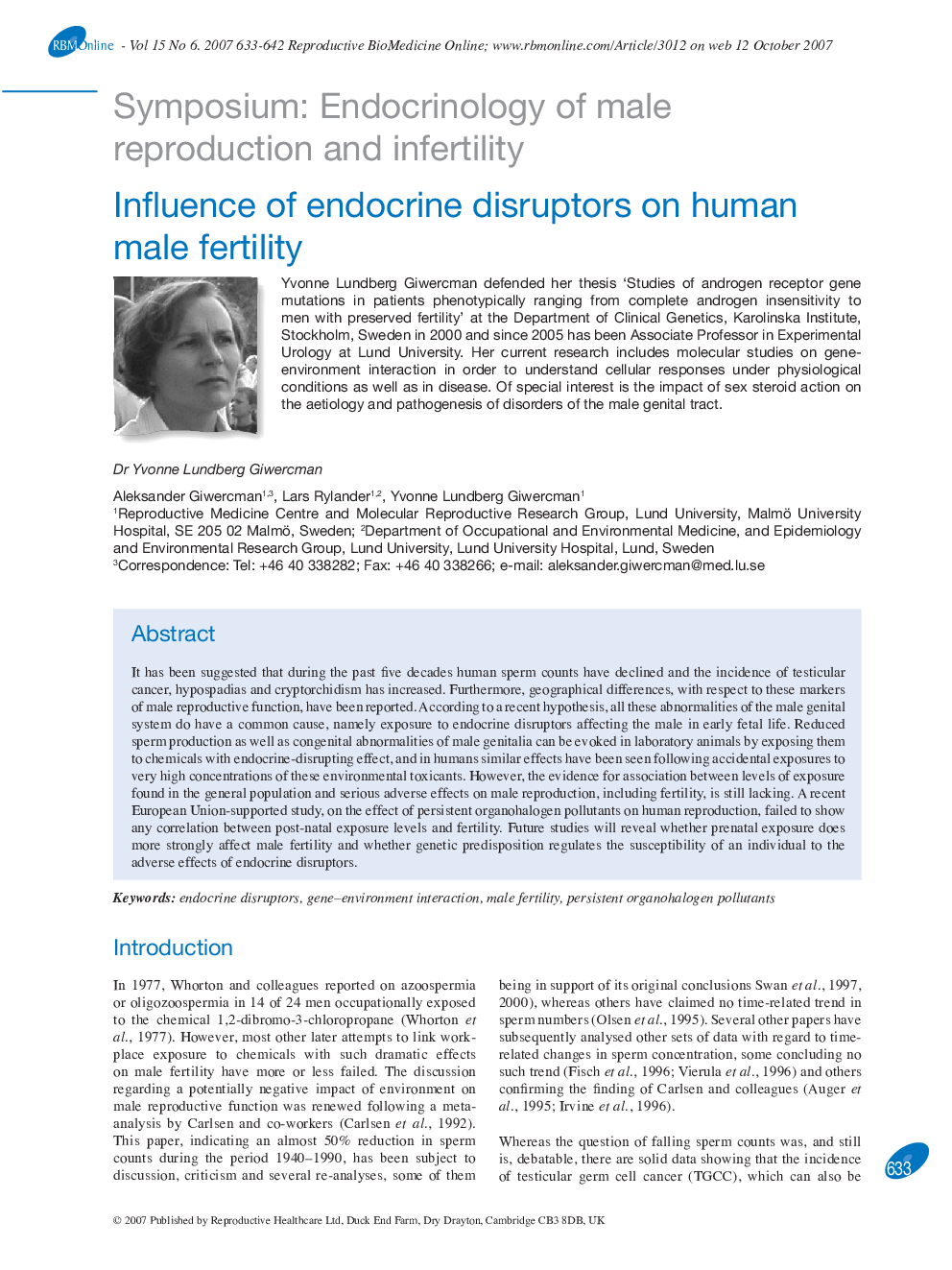| Article ID | Journal | Published Year | Pages | File Type |
|---|---|---|---|---|
| 3972860 | Reproductive BioMedicine Online | 2007 | 10 Pages |
It has been suggested that during the past five decades human sperm counts have declined and the incidence of testicular cancer, hypospadias and cryptorchidism has increased. Furthermore, geographical differences, with respect to these markers of male reproductive function, have been reported. According to a recent hypothesis, all these abnormalities of the male genital system do have a common cause, namely exposure to endocrine disruptors affecting the male in early fetal life. Reduced sperm production as well as congenital abnormalities of male genitalia can be evoked in laboratory animals by exposing them to chemicals with endocrine-disrupting effect, and in humans similar effects have been seen following accidental exposures to very high concentrations of these environmental toxicants. However, the evidence for association between levels of exposure found in the general population and serious adverse effects on male reproduction, including fertility, is still lacking. A recent European Union-supported study, on the effect of persistent organohalogen pollutants on human reproduction, failed to show any correlation between post-natal exposure levels and fertility. Future studies will reveal whether prenatal exposure does more strongly affect male fertility and whether genetic predisposition regulates the susceptibility of an individual to the adverse effects of endocrine disruptors.
